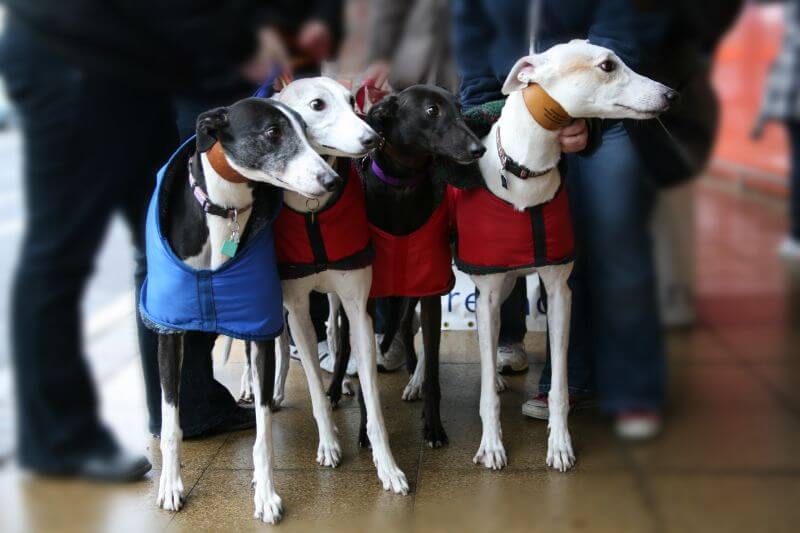Why does my greyhound freeze on walks?
From super speedy to stationary: Why some retired greyhounds freeze on walks.
One of the most common questions I get asked about retired racing greyhounds is: “Why does my greyhound suddenly freeze on walks and refuse to move?” There are a lot of misconceptions about greyhound behaviour and my latest article for the Retired Greyhound Trust‘s (RGT) magazine, Homer, explains why many greyhounds exhibit this freezing behaviour. You can read the article below and even download a PDF version to keep, or give to clients.
You’re enjoying a leisurely walk with your greyhound and suddenly, he/she puts on the brakes and won’t move. It can appear like your hound’s paws are superglued to the pavement or that your dog is being ‘stubborn’ as, no matter what you do, you just can’t get them to move.
It can be easy for us to misunderstand why our hounds behave in a certain way and, in reality, the reason for freezing is not that your hound is being stubborn or dominant (both misused and misunderstood terms when it comes to dog behaviour). It is more likely that your greyhound is scared or worried by something in their immediate environment, and it is the underlying emotion of fear that has caused them to ‘apply the brakes’.
You may wonder what your hound has to be afraid of – after all, they’re in a comfortable family home, are well-fed and receive plenty of walks, love and attention. However, before they became a family pet, we need to remind ourselves that, for a large number of retired racing greyhounds, their lives revolved around life in racing kennels and the routine that goes with it. Exposure to everyday sights and sounds is not something that the average greyhound experiences. The things we take for granted in everyday life are, for some greyhounds, completely alien and scary.
The flight or fight response
Most of us have heard of the ‘flight or fight’ response – when faced with a threatening situation we can choose to run away (flight) or resist forcibly (fight). Our greyhounds have the same response mechanism, but with the addition of the freeze behaviour – being rooted to the spot, in response to a perceived threat.
As our greyhounds are on-lead when this occurs, their option to move away (flight) is removed which is why they freeze. They may just freeze for a matter of seconds (which you may not notice), or they may suddenly stop and refuse to move forward.
Overcoming fears and getting moving again
To help our greyhounds adjust to these new experiences and overcome their fears, they need our time, patience, understanding and training using reward-based training methods. The key thing to remember is not to force your hound to move towards the thing they are scared of as this is counterproductive, making it likely for them to be more afraid of walks.
One of the main ways of helping our hounds overcome fears is using a behaviour modification training technique called ‘systematic desensitisation and counter-conditioning.’ In essence, what this means is teaching your dog that the ‘scary stuff’ isn’t scary at all and that it is actually a very good thing, which predicts good stuff happening. This is counterconditioning and systematic desensitisation – a very gradual process with repeated pairings of the ‘scary stuff’ with really good stuff.
Getting further help
If your dog continues to freeze on walks, I recommend that you seek help from a professional, qualified dog trainer and/or behaviourist to help with the training, such as members of the Association of Pet Dog Trainers, UK (www.apdt.co.uk) and the Association of Pet Behaviour Counsellors (www.apbc.org.uk).


